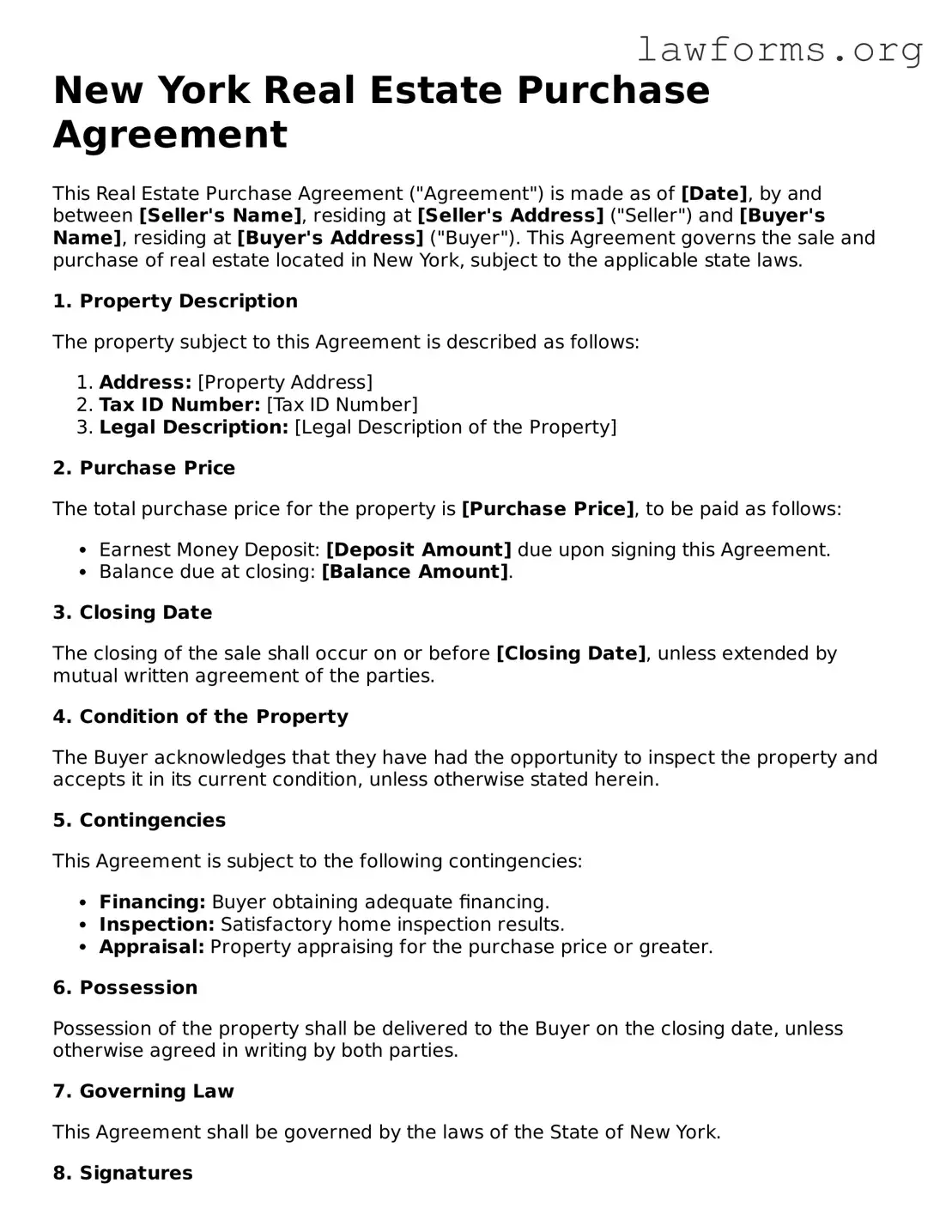New York Real Estate Purchase Agreement
This Real Estate Purchase Agreement ("Agreement") is made as of [Date], by and between [Seller's Name], residing at [Seller's Address] ("Seller") and [Buyer's Name], residing at [Buyer's Address] ("Buyer"). This Agreement governs the sale and purchase of real estate located in New York, subject to the applicable state laws.
1. Property Description
The property subject to this Agreement is described as follows:
- Address: [Property Address]
- Tax ID Number: [Tax ID Number]
- Legal Description: [Legal Description of the Property]
2. Purchase Price
The total purchase price for the property is [Purchase Price], to be paid as follows:
- Earnest Money Deposit: [Deposit Amount] due upon signing this Agreement.
- Balance due at closing: [Balance Amount].
3. Closing Date
The closing of the sale shall occur on or before [Closing Date], unless extended by mutual written agreement of the parties.
4. Condition of the Property
The Buyer acknowledges that they have had the opportunity to inspect the property and accepts it in its current condition, unless otherwise stated herein.
5. Contingencies
This Agreement is subject to the following contingencies:
- Financing: Buyer obtaining adequate financing.
- Inspection: Satisfactory home inspection results.
- Appraisal: Property appraising for the purchase price or greater.
6. Possession
Possession of the property shall be delivered to the Buyer on the closing date, unless otherwise agreed in writing by both parties.
7. Governing Law
This Agreement shall be governed by the laws of the State of New York.
8. Signatures
In witness whereof, the parties hereto have executed this Real Estate Purchase Agreement as of the date first above written.
Seller: ___________________________ Date: _______________
Buyer: ___________________________ Date: _______________
